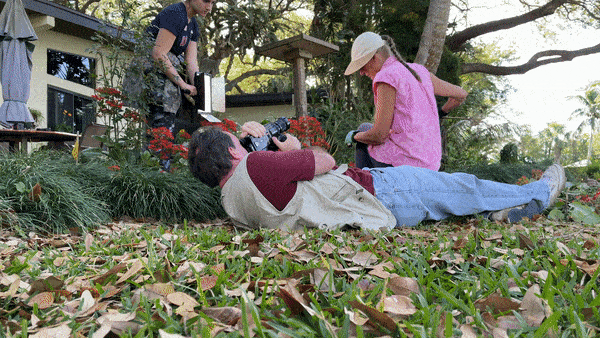
The hands-on world of analog has been making a comeback over the past several years, especially among the young.
For some it’s a mystery worthy of Stonehenge; for others it’s an anachronistic sea change that was bound to happen. But as the 21st century nears the end of its first quarter, it seems analog is making a red zone drive in the hearts and minds of Millennials and Generation Z.
A Canon 1014 XL-S Super 8 camera. Photo/Frank DiCesare
Some are tuning out their apps in exchange for an occasional needle drop on a refurbished stereo; others are tapping a typewriter keyboard; and still others (lots of them, it seems) have rediscovered the world of film.
Don’t believe me? Take a trip down the YouTube rabbit hole and count the number of videos featuring an under-35 host crowing about the glories of celluloid. The number is easily in the tens of thousands.
It’s as if these kids somehow wandered off into America’s Forbidden Zone and stumbled upon the remnants of a 1970s camera store. Amid the smashed debris, they dusted off Nikon F2’s, Leica M3'sand Minolta SRT 100’s. Some may have located the motion picture department and unearthed a Braun Nizo Professional, or a Canon 1014 XL-S. One of them may have unboxed a Bolex.
But regardless of what they discovered, they learned quickly that Dr. Zaius was wrong – they liked what they found. The question was – why?
Those of us old enough to remember Three Mile Island, The Pepsi Challenge, and Walter Cronkite’s final sign-off, recall the birth of the video camcorder and film’s slow, stubborn decline. Indeed, what was supposed to have been a torch passing has evolved into a 30-year tug of war. The only difference is that one side of the rope evolved; the other side remained mostly true to its formula.

Early video was different from film. In the 1960s and 70s, it looked like electronic garbage with little contrast. Why do you think John F. Kennedy sported a tan and a dark suit for his first televised debate with Richard Nixon in 1960? Contrast. Kennedy knew a dark suit would stand out from the studio’s light gray background. (Moderator Howard K. Smith of CBS News was also wearing a
CBS Washington Correspondent Howard K. Smith (center) moderates the first
televised debate between Sen. John F. Kennedy, D - Mass., (left) and Vice President
Richard M. Nixon, R - Calif., (right). CBS Studios, Chicago, Ill., Sept. 26, 1960.
dark-colored suit.) Nixon, on the other hand, wasn’t as media savvy. With his light grey suit on, he blended in with the background to the point of becoming lost in a Zone 7 tidal wave.
As its technology advanced into the 1980s, and even in to the 1990s, video became sharper and sharper to the point of becoming utterly realistic. However, it still retained its cold, video-ish look. It seemed, at lease for the time, that film was the art and video was the science.
Then 1999 arrived along with the Nikon D1, the world’s first professional digital single lens reflex camera. Soon words like jpegs and tiffs would enter the global lexicon. We know the rest of the story – photography and post-production would never be the same.
Nearly 25 years later smartphone users can take razor-sharp pictures and shoot high-definition movies with little thought. Aim, point, shoot, export and you’re done. And if you don’t like the results, just press the trash can icon and repeat. Give the smartphone another five years and our pets will be shooting movie trailers and taking selfies to post to Instagram.
So with all this technology in our pocket, what accounts for the resurgence in film photography? And why is it that young people seem to be leading the charge? The reasons may be as vast as Apple’s App Store.
As film and digital photographer and filmmaker, my explanation is simple – film harbors a look that digital, no matter what plug-ins you purchase, cannot replicate. Video has indeed come a long way in capturing saturation, contrast and, above all, resolution since the days of the Beta vs. VHS wars. Today, however, if you want film's timeless look in your project, you gotta shoot with it.
Even the latest RED's and Arri Alexa's cannot duplicate the look that film has offered for more than a century. For younger filmmakers today, it’s the look of some of their favorite films from their parents’ and grandparents’ era, the wired world of the 20th century.

This world of Welles, Ford, DeMille, and Kubrick intrigues today’s young filmmakers, those too young to remember 9/11, but too curious about the past to let something like film zoom by them without a crack at it. They also see the analog challenges film presents and they’re up to it. They know it’s a process far different from video and they yearn to crack its code.
Frank DiCesare films Cathy Willard of Palmetto, Fla. with his Canon 1014
XL-S Super 8 camera while Miranda Clapp serves as gaffer, March 5, 2021.
Video footage/Tony Gallucci.
I’m far from a youngster, but I’m making my own return to film. I’ve shot 35mm still images for years with my DSLR and its RAW files. But now I need a break from the digital world. In the months ahead, I will invite you on my own analog journey, as production continues on my first Super 8 short film. The first seven rolls are in the can, but there’s plenty more to shoot.
I hope you’ll join me.
Best wishes,

Frank DiCesare